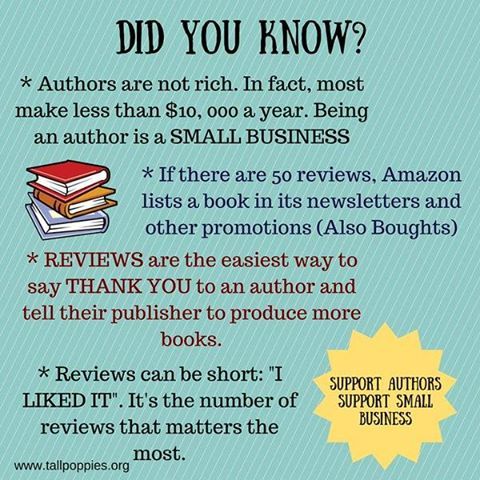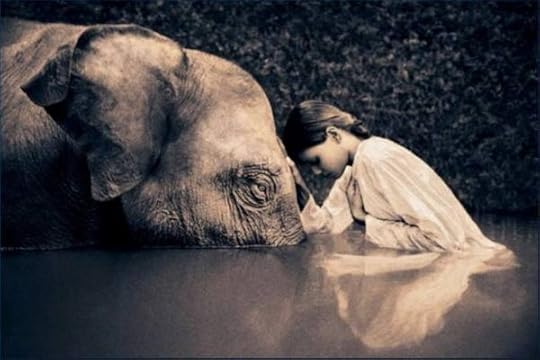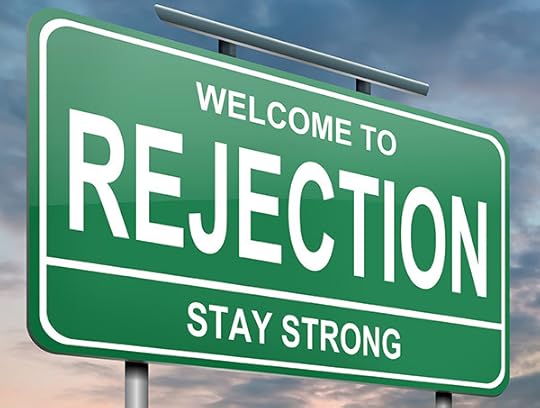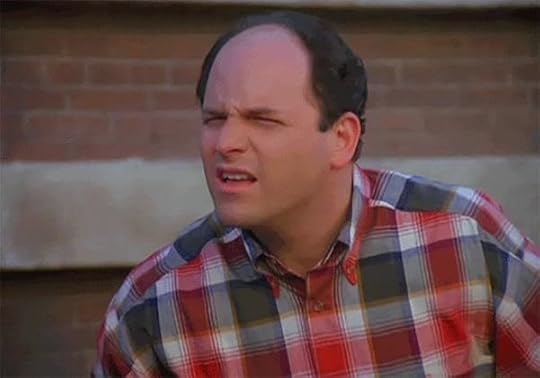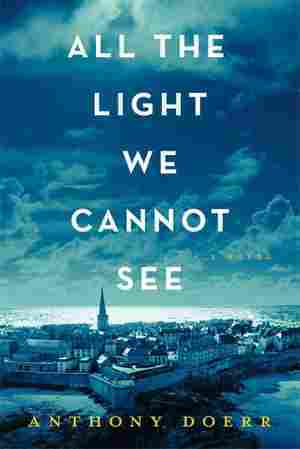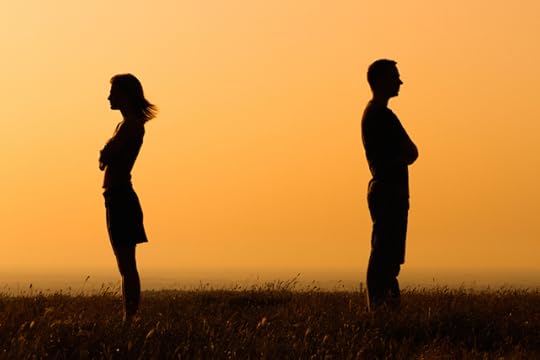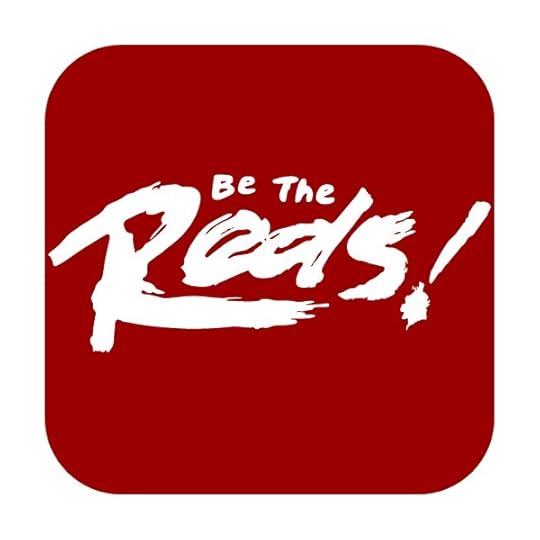Richard Harris's Blog, page 51
March 2, 2016
In Support of Unfamous Authors
March 1, 2016
To Anyone Who Thinks They’re Falling Behind In Life
Sometimes you have to take a step back in life and call out the elephant in the room. And sometimes that elephant will show you that it’s all good (even when your world is falling to pieces), that it’s useless to compare yourself to others (even if it’s second nature for the entire animal kingdom), and to recognize that effort does not always equal success (good people who work hard get crushed just as often in life as bad people rise to the top).
Jamie Varon has penned an emotional, poignant, and deeply affecting piece in the Huffington Post that is a rare case of dropping F bombs not just with aplomb, but with apparent impunity – and getting away with it!
She inspires without being pedantic or patronizing. She’s youthful and hip, but sage enough to know some of life’s great secrets. Most of all, though, she has the reader walk away feeling better about themselves no matter how shitty things might seem right now. Varon’s prose is gritty, yet uplifting; seemingly base until you think about what she’s just written and go, Shit la merde! She’s bang on, yo!
Personally, motivational speakers annoy me. The best part of Chicken Noodle Soup for the Soul, for example, was that I didn’t have to read Jack Canfield, the anthologist who put it all together, but instead got to be blown away by some impressive writers and orators.
With respect to Jamie Varon’s piece, if you don’t have the time to read the entire article, here are some of my favourite nuggets of gold:
Our experience cannot always be manipulated. Yet, we don’t act as though we know this truth. We try so hard to manipulate and control our lives, to make creativity into a game to win, to shortcut success because others say they have, to process emotions and uncertainty as if these are linear journeys.
Things are dark until they’re not. Most of our unhappiness stems from the belief that our lives should be different than they are.
You need to stop listening to people who are in vastly different life circumstances and life stages than you tell you that you’re just not doing or being enough.
And what I think we all need more than anything is this: permission to be wherever the fuck we are when we’re there.
Sometimes you’re not falling in love because whatever you need to know about yourself is only knowable through solitude.


February 27, 2016
Affordable Housing, Meet John Galt
 +
+
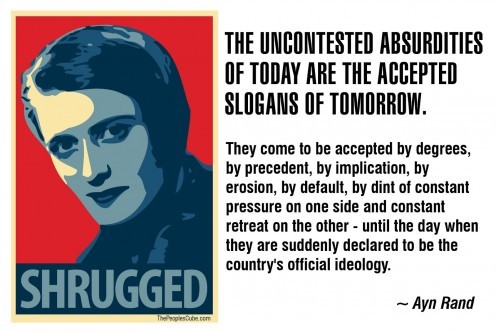 =
=HO
 PE?
PE?
“Who is John Galt?”
The Toronto Star ran a heartbreaking article on Friday, February 26 entitled “Months to live, but a longer wait for housing.” Part human interest story about 41-year-old Lisa De Medeiros, a single mother of two girls who has terminal abdominal cancer, part statistical nightmare about affordable housing in Toronto (and Canada as a whole, really), I felt compelled to write something on the subject, if not for the moral imperative then for my mother, who for decades has fought for greater funding to be directed towards rent-geared-to-income housing in this grossly overpriced city.
In Toronto, there are currently 95,280 households (or 238,200 people according to the latest Stats Can numbers) on the two-bedroom waiting list for subsidized housing. However, the city has only 70,000 units to go around, so the length of time someone has to wait for one of these units is, on average, 8.5 years.
Not months. YEARS, baby!
There is one exception (in theory), however. Victims of domestic abuse and the terminally ill shoot to the top of Housing Connection’s list. The average wait time for a two-bedroom unit for these people is said to be 9 months, but that’s a load of hooey. De Medeiros applied two years ago and has still not been accepted. Is Housing Connection, caretakers of Toronto’s social housing wait list, an evil empire of doom? No. The mortifying reality is that they could only move in 145 households last year and – even more horrifying – there were “emergency” applicants on the list who had been waiting longer and/or had a more severe situation than De Medeiros.
Toronto has built 2,848 affordable housing units over the last five years, about 570 units a year for a city with 2.6 million people, or roughly one new unit for every 4,500 Torontonians annually. Compare that with the more than 80,000 private condos waiting to be built/waiting for approval from Toronto City Council.
Here’s the real problem: Approximately 604,000 of us in Canada’s wealthiest city live at or below the poverty line ($18,759). Put another way, 23% of Toronto citizens are poor and the city has enough rent-geared-to-income units to accommodate 7% of the city’s households (not individuals). Furthermore, according to the City of Toronto Urban Development Services, Toronto’s population is expected to grow more than 15% by 2031, while the population of the GTA is forecast to grow about 35%, to 7.45 million.
It’s not much better at the provincial or federal levels. Ontario’s population is 13.6 million and cities and towns around the province have built a meager 18,030 subsidized housing units over the last 10 years, or 1 home for every 7,500 Ontarians a year. Perhaps the most troubling statistic is at the federal level. In the Netherlands, 33% of all homes are subsidized. In England, that number is 17%. In Canada, the second largest country in the world, one of the world’s wealthiest nations, and a land blessed with much bounty and seemingly infinite natural resources, 5% of homes are subsidized nationally.
Today, Doris Riker, the mother of Lisa De Medeiros, has raised a thought-provoking point in her ongoing letter campaign to officials, the mayor’s office and her local MPP: “If they can help find all these Syrian refugees find affordable apartments, why can’t they help my daughter find one?”
Indeed, while we (the “haves” Canadians) like to pat ourselves on the back for being such kind, gracious global citizens when it comes to assisting refugees, the rest of us (the “have-nots”) can’t help but sit back and wonder, Why are we spending an estimated $678 million over six years on the expected 25,000 Syrian refugees to Canada when we can’t even properly care for our own nationals? Is a feather in our political cap on the international stage worth more than providing adequate housing – a basic human necessity and integral element to our dignity – to the 4.9 million Canadians who currently live in poverty?
In Ayn Rand’s Atlas Shrugged, a novel as controversial in many ways as our housing policies, the story opens with the American economy falling apart and workers being laid off in staggering numbers. Just as worrisome, the country’s brightest lights and top talent are literally disappearing, one by one, and crippling the fields of commerce, science, and the arts. Not long after the brain drain begins and the impending demise of the American economy looms morbidly on the horizon, a phrase starts creeping into the lexicon of people’s everyday banter: “Who is John Galt?”
It’s almost used in a pejorative way:
A: “The economy’s going down the crapper, eh, Billy Bob?”
B: “Yeah, but who is John Galt?” (i.e. Yeah, and what the hell are we supposed to do about it, genius?)
As Dagny Taggart, the novel’s heroine, opines, there’s a tangible despair that John Q. Public feels and ultimately expresses through this apparently banal – and unanswerable – question. Yet those four words still manage to capture the hopelessness of a bitter, frustrated society.
It’s only later in the novel that we learn there really is a John Galt, the “invisible everyman” floating undetected throughout society, and he has been spearheading the brain drain since establishing his utopian home of Atlantis, a remote valley where the country’s smartest, most gifted minds now live in a valley somewhere deep among the Rockies in an effort to escape the incompetent and dictatorial government they don’t wish to live under any longer.
And that brings us to our present housing dilemma in Canada, especially in the country’s most populous city. Is there any chance that we will have the foresight and compassion to provide affordable accommodation to our poorest citizens?
Perhaps that question is best answered by Lisa De Medeiros, who has been evicted from her current apartment because she can no longer afford to pay her rent and will, 12 days from now, on March 10, 2016, be homeless. As the terminal inflammatory fibrosarcoma mother of two put it, “By the time I get affordable housing, I’ll be dead.”
Let’s pray the answer to the above question lies not in the rhetorical nature of the former Atlas Shrugged parable, but in the hope offered in the latter one, a scenario whereby society’s wealthiest and most intellectually able can come together to find a solution to our present-day subsidized housing quandary – and not in the middle of nowhere, but in cities and towns across our great country.


February 25, 2016
On Rejection
Rejection. Just hearing the word sucks big rhino horn. But actually being rejected? That’s more akin to going through self-immolation while walking on a bed of hot coals as someone stabs at your soul with fragments of broken glass.
Or, you know, something like that.
I imagine most people would agree that the harshest form of rejection has to do with love. Who, after all, has the armour/wherewithal/fortitude/bravery to put their heart out there on the proverbial table, only to be told, Thanks, but no thanks. Oh, and by the way, you have bad breath.
I’d answer my own rhetorical question, but I think everybody already knows the answer. However, rejection is not limited to the objects of our desire. After personal relationships, it’s my firm belief that work – in the broadest sense – is a close second when it comes to that evil, three-syllable monster called rejection. To have your brilliant idea shot down at work; to be told you’re not being rehired for a position that still exists at your company; to be turned down by the banks for a loan or line of credit to launch your dream company; to be passed over for promotion again and again ad nauseam.
To be sure, all those scenarios stink worse than a skunk that’s been rolling around in a vat of kimchi and gorging on poutine and Labatt 50. But for artists in any field, I think the sting is, alliteratively speaking, particularly personal, painful, and pernicious. Why, you ask? I’m so glad you asked! Let me explain.
Last summer, I was honoured to speak to young/emerging writers in the Toronto area at a Diaspora Dialogues Charitable Society gathering. One of the topics I addressed was rejection. As every artist, whether amateur or professional, understands all too well, just “putting yourself out there” is hard enough; having your final product mocked or scorned or flat-out rejected by others is not exactly the definition of pleasurable or fun. It’s like undressing in plain view for people to judge your physical form. And as we all know from informative documentaries such as Zoolander and The Devil Wears Prada, even the most beautiful of human specimens – runway and SI swimsuit models! – are paranoid about their bodies.
With respect to writing, here’s some food for thought to mow down on:
Before Agatha Christie had her first whodunit published, she was rejected by publishers for five long, grueling years. Today, only William Shakespeare has sold more copies of his works.
Pearl Buck was told “The American public is not interested in China” by one publisher upon submitting The Good Earth. When it was eventually published, it spent two years on the bestseller list and, in the process, earned her the Nobel Prize in Literature.
After being rejected by 22 publishers, James Joyce finally got Dubliners published. In its first year, it sold a whopping 379 copies, 120 of which were purchased by the author himself.
After being rejected by 25 agents, Audrey Niffenegger took her debut novel to a small publisher in San Francisco. The Time Traveler’s Wife went on to sell 7 million copies, was adapted into a hit movie, and has since been translated into 33 languages.
Nicholas Sparks was rejected by 25 agents before his book that on first glance appeared to be a guide to laptop computers found a home. A week later, Time Warner bought the rights to The Notebook for $1 million.
Even the most successful authors, whether looked at commercially or critically, have faced rejection early in their careers. As Jack Canfield – author of the Chicken Noodle Soup for the Soul series (and with paltry sales of 500 million copies worldwide) – once put it, “One of life’s fundamental truths states, ‘Ask and you shall receive.’ As kids we get used to asking for things, but somehow we lose this ability in adulthood. We come up with all sorts of excuses and reasons to avoid any possibility of criticism or rejection.”
Being rejected will never be a walk in the park, but it’s the resilient, never-give-up attitude that separates the warriors who succeed from the quitters who will never achieve their dreams. Don’t ever be afraid to put yourself out there and to believe in yourself when everyone else may appear to disagree. Or, as “The Voice” tells Ray Kinsella in Field of Dreams, “If you build it, he will come.”


February 23, 2016
Myopia, Reading & The End of the (Visible) World
Ah, George, I know the feeling. You don’t have your glasses on and have to look at something or someone more than a foot away from you. When I was in South Africa a few years ago, they were filming Invictus. While out for dinner one night, I thought I saw the film’s star, Matt Damon, sitting at the bar. As I got closer I realized my folly. It was Clint Eastwood.
Ouch!
This condition is called myopia, the most common refractive error of the eye. According to allaboutvision.com, it’s a condition that occurs “when the eyeball is too long, relative to the focusing power of the cornea and lens of the eye. This causes light rays to focus at a point in front of the retina, rather than directly on its surface.”
Per a recent article on factcoexist.com, roughly 23% of the world’s population suffers from myopia right now, but that figure is expected to jump to 50% by 2050. Holy coke bottles, Batman! That’s a lot of nerds running around the planet!
Aside from genetic factors passed on through the generations, squinting at computer and small cell phone screens seem to be the biggest culprits in this global epidemic. (Okay, so it’s not exactly a disease, but still!) That got me to thinking about reading. Unless you procure one of those large-print books usually reserved for farsighted people, books tend to have pretty small print. And according to the Pew Research Center, we in North America are reading slightly fewer print books today than we were just five years ago (63% of people now read at least one book a year compared to 71% in 2011).
So reading the printed page isn’t the villain here. Why, then, computer screens and cell phones? The Washington Post claims it comes down to two environmental factors: blinking and distance. We tend to stare more and blink less when looking at a screen, which is not a good thing because it can lead to computer vision syndrome due to the fact that we are getting less refreshment from tears. In addition, when we read books we tend to be looking down, while we tend to look at screens straight ahead. As The Washington Post put it, “When you look down, more of your eye is covered by the eyelid, but when you look straight ahead more of your eye is exposed to the drying effect of air.”
The second factor , distance, is important because the eye has to work much harder when examining things at closer distances. According to one study, the average person holds their cell phone 14 inches from their eyes to read text messages. They read from computer screens approximately 12 1 / 2 inches away, yet read printed text on paper about 15 3 / 4 inches from their eyes.
The lesson here? We’re all doomed and SOL. End of the world, baby. Pack up your things, throw in the towel, and call it a day. Stick a fork in yourself, yo, ’cause you be done like dinner. And I should know because I’m the poster boy for this whole ocular ruination. When I’m not practicing interpretive dance, playing the piccolo, or teaching deaf children how to read Braille, I’m most often either on my computer or reading a book.
The result of this pattern in work and leisure behaviour has not been so goodly or nicety. At my last physical six months ago, my eyesight was tested at 20/100 without my glasses on, as in, what a person with healthy eyesight can see from 100 feet away I can only see from 20 feet away.
But there’s hope in the form of two types of surgery: PRK, in which a laser “removes a layer of corneal tissue, which flattens the cornea and allows light rays to focus more accurately on the retina,” and LASIK, the most common refractive procedure, whereby “a thin flap is created on the surface of the cornea, a laser removes some corneal tissue, and then the flap is returned to its original position.”
In my own case, I get paranoid about the thought of putting contact lenses in my eyes, let alone having someone put a laser near my eyeballs. I guess that means I’ll be the eternal dork with ever-larger glasses as the years pass, the numbnuts squinting half the time and saying, Is that a man or a woman down the street?
Uhhhh, that’s actually a robotic Richard Simmons, dude, my friend will say.
Doh!


Myopia, Reading & The End of the World
Ah, George, I know the feeling. You don’t have your glasses on and have to look at something or someone more than a foot away from you. When I was in South Africa a few years ago, they were filming Invictus. While out for dinner one night, I thought I saw the film’s star, Matt Damon, sitting at the bar. As I got closer I realized my folly. It was Clint Eastwood.
Ouch!
This condition is called myopia, the most common refractive error of the eye. According to allaboutvision.com, it’s a condition that occurs “when the eyeball is too long, relative to the focusing power of the cornea and lens of the eye. This causes light rays to focus at a point in front of the retina, rather than directly on its surface.”
Per a recent article on factcoexist.com, roughly 23% of the world’s population suffers from myopia right now, but that figure is expected to jump to 50% by 2050. Holy coke bottles, Batman! That’s a lot of nerds running around the planet!
Aside from genetic factors passed on through the generations, squinting at computer and small cell phone screens seem to be the biggest culprits in this global epidemic. (Okay, so it’s not exactly a disease, but still!) That got me to thinking about reading. Unless you procure one of those large-print books usually reserved for farsighted people, books tend to have pretty small print. And according to the Pew Research Center, we in North America are reading slightly fewer print books today than we were just five years ago (63% of people now read at least one book a year compared to 71% in 2011).
So reading the printed page isn’t the villain here. Why, then, computer screens and cell phones? The Washington Post claims it comes down to two environmental factors: blinking and distance. We tend to stare more and blink less when looking at a screen, which is not a good thing because it can lead to computer vision syndrome due to the fact that we are getting less refreshment from tears. In addition, when we read books we tend to be looking down, while we tend to look at screens straight ahead. As The Washington Post put it, “When you look down, more of your eye is covered by the eyelid, but when you look straight ahead more of your eye is exposed to the drying effect of air.”
The second factor , distance, is important because the eye has to work much harder when examining things at closer distances. According to one study, the average person holds their cell phone 14 inches from their eyes to read text messages. They read from computer screens approximately 12 1 / 2 inches away, yet read printed text on paper about 15 3 / 4 inches from their eyes.
The lesson here? We’re all doomed and SOL. End of the world, baby. Pack up your things, throw in the towel, and call it a day. Stick a fork in yourself, yo, ’cause you be done like dinner. And I should know because I’m the poster boy for this whole ocular ruination. When I’m not practicing interpretive dance, playing the piccolo, or teaching deaf children how to read Braille, I’m most often either on my computer or reading a book.
The result of this pattern in work and leisure behaviour has not been so goodly or nicety. At my last physical six months ago, my eyesight was tested at 20/100 without my glasses on, as in, what a person with healthy eyesight can see from 100 feet away I can only see from 20 feet away.
But there’s hope in the form of two types of surgery: PRK, in which a laser “removes a layer of corneal tissue, which flattens the cornea and allows light rays to focus more accurately on the retina,” and LASIK, the most common refractive procedure, whereby “a thin flap is created on the surface of the cornea, a laser removes some corneal tissue, and then the flap is returned to its original position.”
In my own case, I get paranoid about the thought of putting contact lenses in my eyes, let alone having someone put a laser near my eyeballs. I guess that means I’ll be the eternal dork with ever-larger glasses as the years pass, the numbnuts squinting half the time and saying, Is that a man or a woman down the street?
Uhhhh, that’s actually a robotic Richard Simmons, dude, my friend will say.
Doh!


February 21, 2016
All the Light We Cannot See
Read this book.
Winner of the 2015 Pulitzer Prize, Anthony Doerr’s All the Light We Cannot See is an immaculate work of art like few other novels published in recent years. Set during World War II, from occupied France to the farthest edges of Eastern Europe, All the Light We Cannot See is about the intersecting lives of a young boy entering the German Army early in the war and a blind girl living in France. However, it’s also a tale of greed and a German sergeant major’s quest to find the “Sea of Flames,” an incredibly valuable diamond said to both bring immortality to its possessor and death to the owner’s loved ones. At the same time, it is also a story of underground radio broadcasts that reminded me of the excellent German movie The Secret Lives of Others.
What is perhaps most alluring about this book is Doerr’s prose, which is nothing less than spine-tingling, and reminiscent of another master of the craft, Michael Ondaatje.
Here are some examples of Doerr’s literary magic from his multiple prize-winning novel:
“So how, children, does the brain, which lives without a spark of light, build for us a world full of light?”
“She walks like a ballerina in dance slippers, her feet as articulate as hands, a little vessel of grace moving out into the fog.”
“To men like that, time was a surfeit, a barrel they watched slowly drain. When really, he thinks, it’s a glowing puddle you carry in your hands; you should spend all your energy protecting it. Fighting for it. Working so hard not to spill one single drop.”
“To shut your eyes is to guess nothing of blindness. Beneath your world of skies and faces and buildings exists a rawer and older world, a place where surface planes disintegrate and sounds ribbon in shoals through the air.”
“I have been feeling very clearheaded lately and what I want to write about today is the sea. It contains so many colors. Silver at dawn, green at noon, dark blue in the evening. Sometimes it looks almost red. Or it will turn the color of old coins. Right now the shadows of clouds are dragging across it, and patches of sunlight are touching down everywhere. White strings of gulls drag over it like beads.”
My book club, Curling Was Full, read this book last month and in a rare moment of solidarity, everybody agreed that this was a very, very special book. The lesson to take away from this? Do yourself a favour. Go and get a copy of All the Light We Cannot See.


February 19, 2016
Writing an Effective Screenplay Query Letter
Screen Craft posted a helpful piece on writing an effective query letter to pitch your screenplay to an agent. I don’t have a lot of experience pitching screenplay agents, but I have a decade and a half of experience in querying literary agents. At the end of the day, they’re essentially the same. You have to be clear and concise while keeping the email short and alluring.
Check out Screen Craft’s Facebook page for more information about the screenplay writing process and upcoming contests for aspiring writers.


February 18, 2016
Consciously Uncoupling & Jonathan Franzen
Are you married? Do you have a child/children? Do you find yourself staying with your partner mostly (or completely) because of the kids?
The New York Times ran a thought-provoking article a few months ago that I recently came across. The piece by Cole Kazdin, titled “The Original Conscious Uncouplers,” is the story of two parents who stay together for the sake of the kids. Theirs is a relationship devoid of affection or romance, but replete with love and kindness for their offspring. When the kids are deemed old enough to handle the news, the parents announce they are getting divorced, and what was once a seemingly perfect family where nobody fought or raised their voice quickly becomes a war zone, one in which the mother and father can’t even stand being in the same room together.
I know I’m not alone when I say I can relate to this scenario all too well. For me, fewer things represent (and stain) my generation than divorced parents (twice over in my case), some of whom consciously uncoupled, some of whom just went to blows while the ink was still drying on the marriage license.
In literature, it’s easy to find extreme relationships written about very well. Whether it’s the epic love story of books like The Map of Love or The Count of Monte Cristo, or the doomed love of books like Anna Karenina and Madame Bovary, it’s harder to find novels that explore marriage from the ground level, so to speak, a more realistic approach.
Reading this NYT article reminded me of Jonathan Franzen’s Freedom. The Corrections may have been his coming-out party – and a good book in its own right – but it was Freedom that earned Franzen a place among the pantheon of great American writers. And for good reason. Although it could very well have been 100 pages shorter, it’s one of the most realistic fictional accounts of family life in middle America I’ve ever read. In some ways, Franzen has carried the torch forward from Updike’s “Rabbit” series, which chronicled everyday life, including marriage, in a compelling and believable way like few others.
Fortunately, Cole Kazdin’s article has a happy ending after a tumultuous relationship finally rights itself, one in which love and kindness win out. I guess sometimes there really is a silver lining in real life.


February 17, 2016
Reflections on the Hermit Kingdom
Robert Bevan is an old Korea hand who recently left the country after a 14-year stint. He reflected upon some of his memories through his blog in a piece called “Some Things I Will (And Won’t) Miss About Living In Korea.” Although I tend to blanch when reading foreign aliens’ (i.e. non-Korean nationals) musings on The Land of the Morning Calm, Bevan did an excellent job of balancing the good with the bad – and in a pretty freaking funny way.
As someone who lived in Korea for a decade, I’d like to add my 1,000 won to the mix.
THINGS I STILL MISS
Jeonse (전세): When I tell my Korean friends that I pay roughly 1.5 million won in rent, they choke on their pig’s trotters. If you don’t want to take out a 30-year mortgage but don’t want to pay an exorbitant amount in rent, jeonse is the perfect middle ground. Put a deposit down and save the rent money every month. Brilliant!
Army Soup (부대찌개): I have yet to find a restaurant anywhere outside of Korea that can make my favourite Korean soup dish nearly as well (or as cheaply) as restaurants in the Daehanminguk. Oh, to live without my spicy spam, bacon and hot dog soup!
Public Safety: Whether it’s Toronto, London, Cape Town or Sydney, there are neighbourhoods I tend to avoid, especially at night, for fear of protecting my porcelain, model-like skin from the blade or barrel of a roughian’s weapon. From Mokpo to Busan and Seoul to Jeju, I never once felt frightened or intimidated while out in public. Of course, when you’re constantly surrounded by approximately 2.4 million people, it’s hard to commit an act of subterfuge.
Public Transportation: I live in Canada’s largest, wealthiest city and our public transportation is not only a joke but expensive as all hell. It’s $3.25 for a single ride on the TTC. Compare that with $2.75 in New York, $2.25 in Chicago, $2.25 in San Francisco and between 900 won ($1) and 1,500 won ($1.75) in Seoul. More than that, Seoul’s subway system is clean, efficient and snakes around the capital city area like a massive octopus.
THINGS I STILL DON’T MISS
Police: In a word, the Korean National Police Agency is sad. Perhaps they’ve upped their game since I left in 2007, but from my first-hand experiences they were more a bunch of men and women dressed up in uniforms that took pride in a cute little character named Podori. Two experiences stand out for me more than any others. 1) On my second day in Korea, I witnessed a man beating a woman in public as throngs of people watched in awe. This included police officers who, I was told, stood off to the side and didn’t get involved because it was a “private matter.” 2) I witnessed a young man assault a woman in public as two security guards stood off to the side. I took it upon myself to get involved, dragged the guy away, and allowed the woman time to flee the scene in her vehicle, only to have the police arrive later on and attempt to charge me – and not the jerkface – with assault.
Payment System: Once a month? Really? And only when the president of a company signs off? I can’t count the number of times I’ve had payments delayed because the president wasn’t in the office on the last day of the month. Part of the problem is that contracts simply aren’t respected like they are in the West, so a lot of lip service is paid when payments are missed or pushed back weeks, sometimes months. Unfortunately, the only answer you get when this happens is 너무 죄송합니다 (I’m really, really sorry).
Confucianism: For almost two millennia, even the Chinese have recognized that Koreans are more Confucian than the Chinese themselves. Why is this a hot issue? Because the way it’s practiced in Korea breeds misogyny, blind trust and nepotism over a system of equality and meritocracy. Also, when age is more important than skill or experience, you know you have a problem.
Foreign Derelicts: Korea reminds me of Toronto in that there is a disproportionate number of freaks and weirdos. Nowhere in the world have I seen as many crazy people in the downtown core than in Toronto. By the same token, there’s a disproportionate number of foreign delinquents in Korea, most notably in Seoul. Let’s hope that with stricter laws on securing a visa in Korea, the country has fewer crazies arriving from Europe and North America.
Koreans are a proud people. They’re also sensitive/insecure when it comes to national criticism. Anyone who’s spent even a day or two in the country will attest to the fact that there is a lot to do there, a lot to see, and a lot to learn. But no country is perfect. As Bevan put it: “Korea is a small country with a shitload of people. Consequently, most of those people live in high-rise apartment buildings…it would be nice to be able to look out my window and maybe see a hummingbird feeding in my garden, or a couple of squirrels scurrying up the trunk of a tree…But this human beehive lifestyle is not without its benefits, especially for someone who likes to drink.”
So there you have it. You might not have the hummingbirds in a non-existent backyard while living in Korea, but you’ll have cheap booze available pretty much anywhere, anytime. Not such a bad thing, especially if you’re young and like to drink.



